5 Reasons to Take Part in Wrocław Off Gallery Weekend
Wrocław Off Gallery Weekend is a unique event that is organized in Wrocław, Poland on the October 18–20, 2024. It networks and unites various...
Guest Profile 16 October 2024
19 May 2022 min Read
On May 5, 2022, the first pan-European Digital Art Fair was opened to welcome visitors from all over the world. The project is run by Ukrainian ArtTech startup, V-Art. The art fair brings together artists from 43 countries to share, explore, and sell digital art, but most importantly, it gives us an opportunity to extend our presence with art – now we can discover it in reality as well as in digital spaces.
Although the pandemic has slowed down and museums and cultural institutions are open again, it has irreversibly changed the way we experience the events. It is undoubtedly far more emotional to consume the culture, being physically present next to the artwork. But is it real or is it changing? Is it bringing us the same level of emotions? Digital art has boomed in the last two years, became a separate genre, and forever entered the traditional art flow.
The Ukrainian ArtTech startup V-Art runs in partnership with Electric Artifacts, dslcollection, BREEZY, Harddiskmuseum, and Straight Fire. V-Art is a platform for digital art assets that combines NFT marketplace and IP rights to trade and manage digital assets with immersive exhibitions to experience and interact with art.
Until the end of May, visitors have the opportunity to see digital artworks showcased in special pavilions and meet and talk to the selected artists. The whole project opens its virtual door with the Ukrainian Pavilion presenting an exhibition called The Horizon of the Future. It combines artworks of Ukrainian artists into a lieu de mémoire — a place of memory of the previous life before the war. Other digital pavilions will be opened gradually one by one during the month of May, revealing more artworks.
Anastasiia Gliebova, the CEO and co-founder of V-Art said: “The idea of creating EDAF came to the V-Art team about half a year ago. This project was conceived as the first pan-European art fair, because there is a problem of the European region being underrepresented in the digital art scene while the USA and Asia are already hosting many similar events. Additionally, it was very important for us to include Ukrainian art in the whole European context.
Thus, the works of Ukrainian artists are present in almost all of the pavilions, and Russia was excluded from the list of fair participants even before the war. V-Art has always strived to bridge the gap between the worlds of digital and physical art, which is why EDAF is a logical continuation of our activities that began in 2020.”
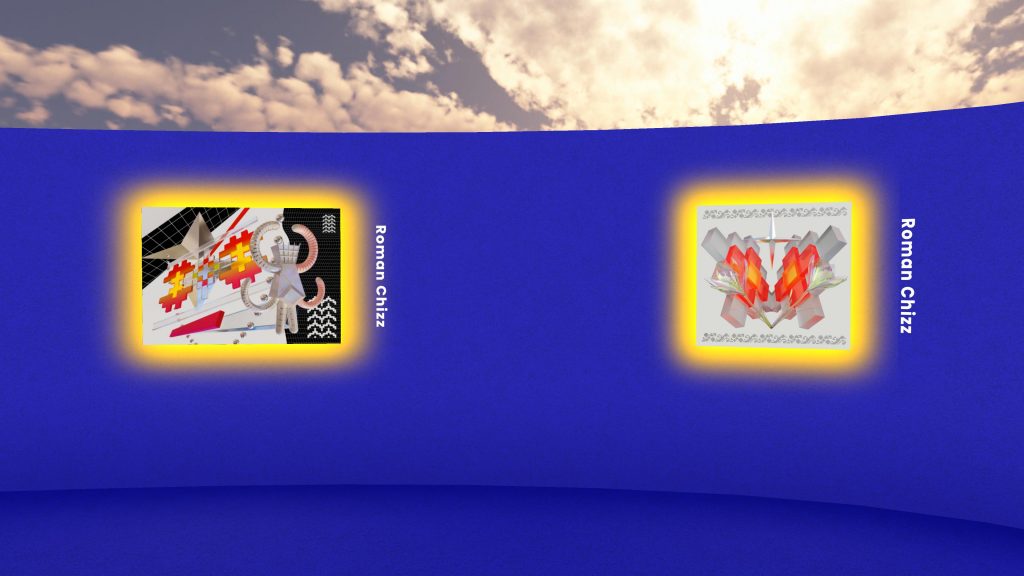
Ukrainian Pavilion. Courtesy of V-Art.
The Ukrainian Pavilion was curated by Yevheniia Havrylenko. Works for this exhibition were mostly created before the full-scale Russian invasion. And now, the collection pictures the collective mental space of the present Ukrainian society. She commented: “The exhibition is a manifesto of the opportunity to bring the “joint of the time” back, even in a period like this — a period of widespread alert in the air. To shake off the lethargy and, by an effort of will, reconnect the past and present with the future, we need to begin developing now. It is also a call to consider the situation and start working out solutions together — solutions that will fasten currently anticipated negative scenarios and replace their potentially dreadful endings with happy endings.
Those who now live in times of peace can perhaps take an example from us, because we work under all circumstances. In my experience, this fact causes a lot of surprise – how can you initiate any projects during the war? New Ukrainian art projects, the exhibition The Horizon of the Future in particular, demonstrate that we think about the future of our country, and we also have something to say and are not silent.”
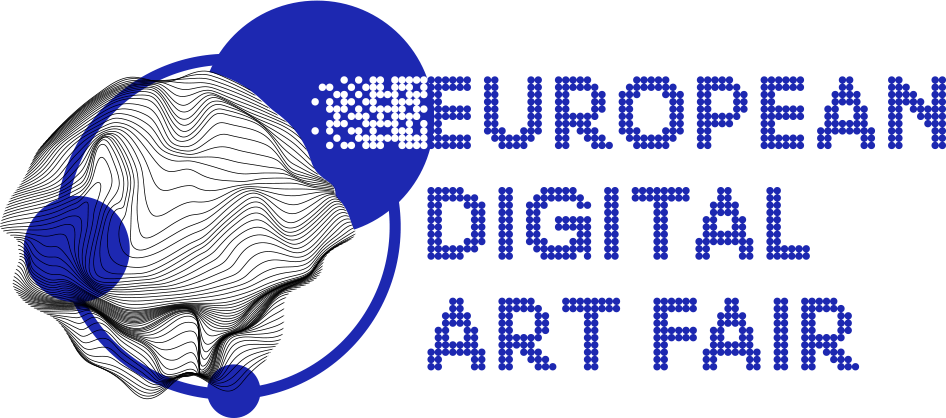
Logotype of European Digital Art Fair. Courtesy of V-Art.
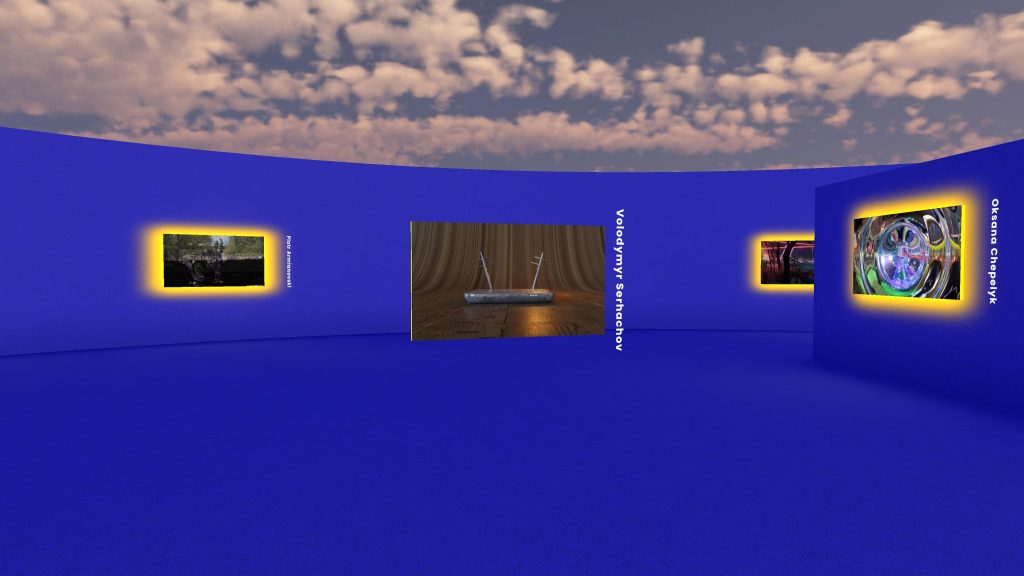
Ukrainian Pavilion. Courtesy of V-Art.
Ukrainian pavilion participants include such contemporary artists as Aleksandr Prytula, BM Babak-Matveev art-duo, Bohdana Patsiuk, Julia Shutkevych, Kalahur Serhii, Kateryna Shyman, Diana Faksh, Kostyantyn Militynskyy, Maria Borovska, Mariia Pylypenko, Nataliia Gromyk, Nikita FREEBOID Khudiakov, Oksana Chepelyk, Oleksii Yehorov, Olga Gurina, Piotr Armianovski, Roksolana Dudka, Roman Chizz, Vartan Markarian, Veronika Cherednychenko, and Volodymyr Serhachov.
A digital artist, Julia Shytkevych, who created her new collection meta_elements while hiding in a bomb shelter in Kyiv, recalls: “War in Ukraine has taught me an important lesson: each creation is a certain statement, often a political one. Art is a litmus paper for any imbalance in the world. Nowadays, it is a universal language that can translate messages to any part of the world despite our ethical, cultural, or other differences. Art unites, but also stimulates one to make a decision on one’s key life beliefs.”
The next pavilion called Art Spaceship was presented on May 18. This pavilion will partly show the results of the global and long-term project of the same name that V-Art ran last year; then, 200 applications from 51 countries were received for participation in the project and it was curated by Eleonora Brizi.
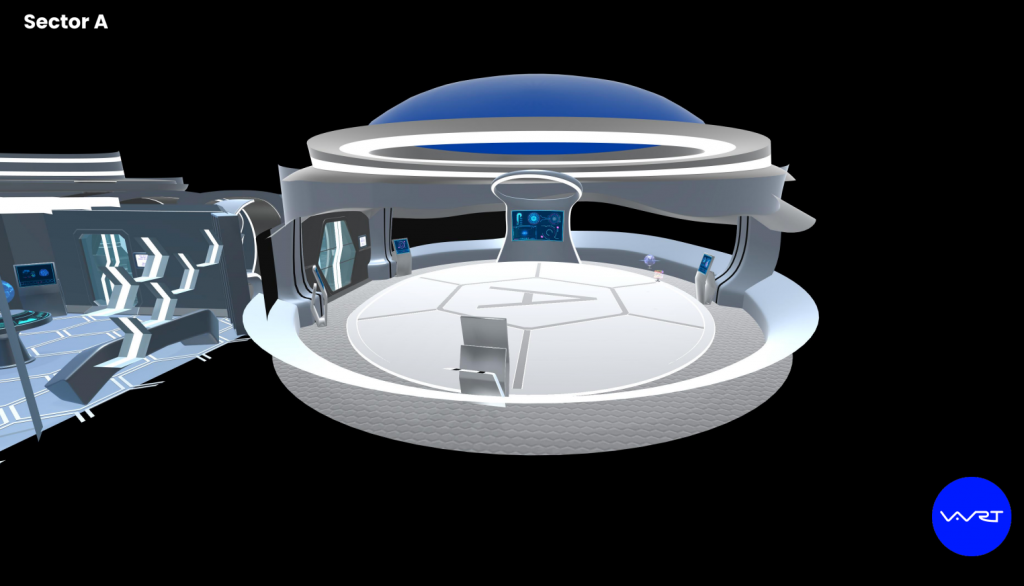
Art Spaceship Pavilion. Courtesy of V-Art.
“The Digital era has transformed the very essence of the way we live, as well as our perception of materiality and space. Art as a reflection of the changes in society gave momentum to a new medium of expression – digital art. Now we are on the verge of a new, space era, where intangible and technological digital art is associated with the development of humankind. Like the golden disk sent to extraterrestrial civilizations with Voyager in 1977, we will send a new message to the Universe,” says the concept of the exhibition.
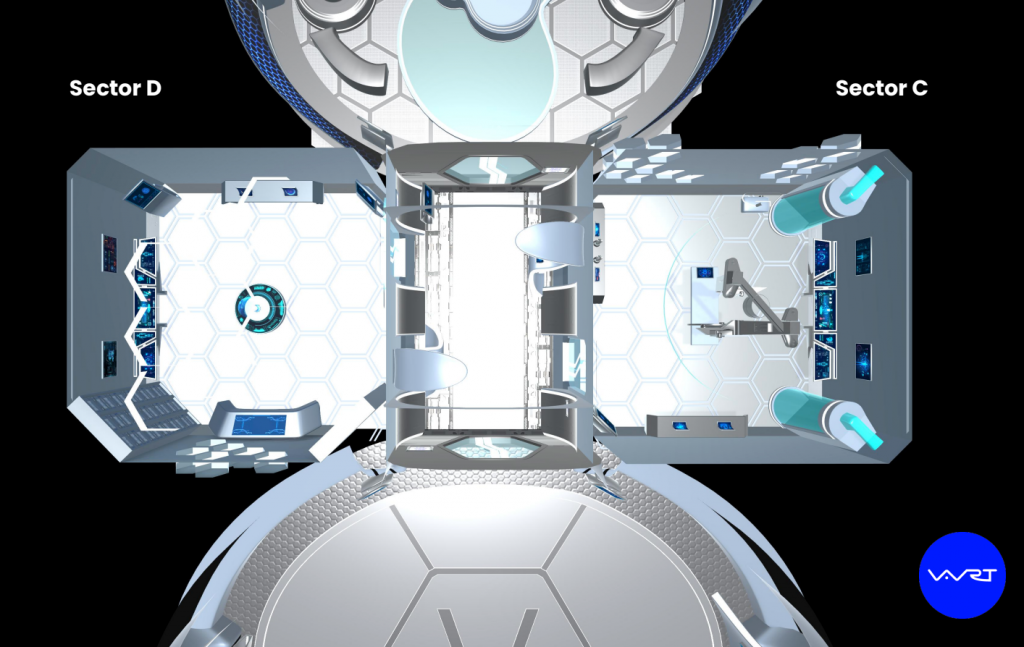
Art Spaceship Pavilion. Courtesy of V-Art.
The Art Spaceship pavilion will feature works by artists such as Dejan Vekic, Frederik De Wilde, Joas Nebe, Krasimira Dimtchevska, Maria Paz Coronel, Manuel Tozzi, Mayte Gómez Molina, Sandrine Deumier, Stefan Eisele, Tina Sejbjerg, and others. It has not been announced publicly yet, but V-Art already has an agreement that soon the works included in the Art Spaceship project will be sent to the International Space Station on a physical medium.
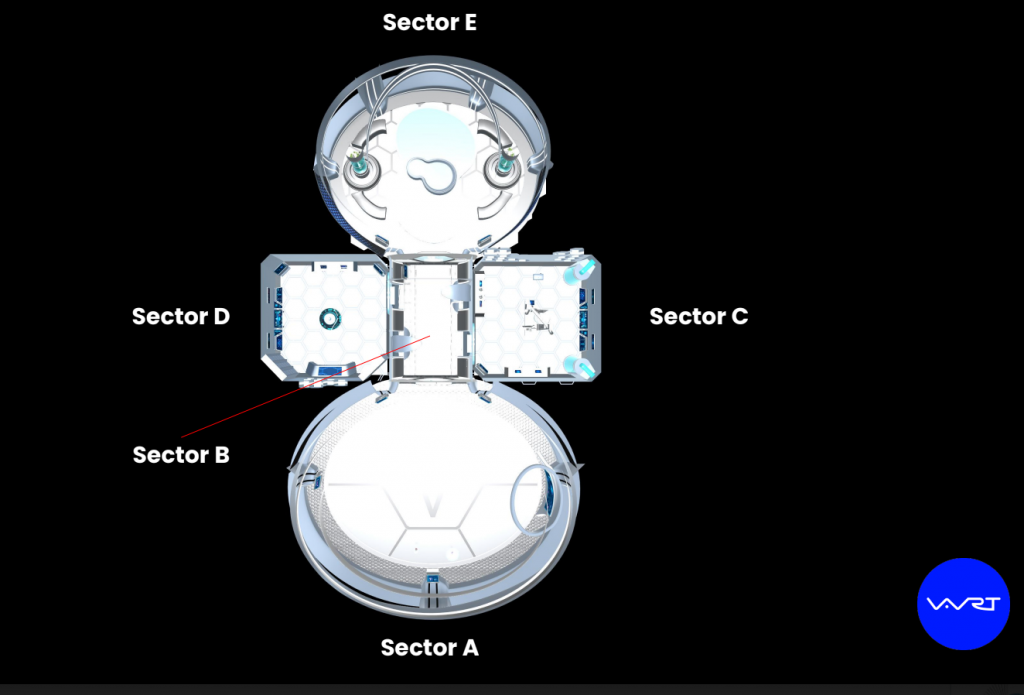
Art Spaceship Pavilion. Courtesy of V-Art.
So how is it to experience the exhibition? I am not a gamer, so at the beginning, it was quite a challenge for me to navigate around the virtual spaces, but after a while, when I found my way through it was an interesting experience. Some of the works are truly moving and, despite seeing them in a digital space, they make an impression and, being kind of interactive, they add to the emotions you feel looking at them.
One of the most striking for me was the work of Oleksii Yehorov, My life is hanging all over the chairs in a random apartment. It is an IDP’s (internally displaced person) reflection on whatever is left of his own life and how there is no place even for those tiny scraps in the new one, how unwelcoming the safety can feel.
Another one is Expanse by Vartan Markarian – a video installation is a metaphorical view of ecological catastrophe, a call to conscious consumption of resources.
Here you can access all the pavilions.
DailyArt Magazine needs your support. Every contribution, however big or small, is very valuable for our future. Thanks to it, we will be able to sustain and grow the Magazine. Thank you for your help!